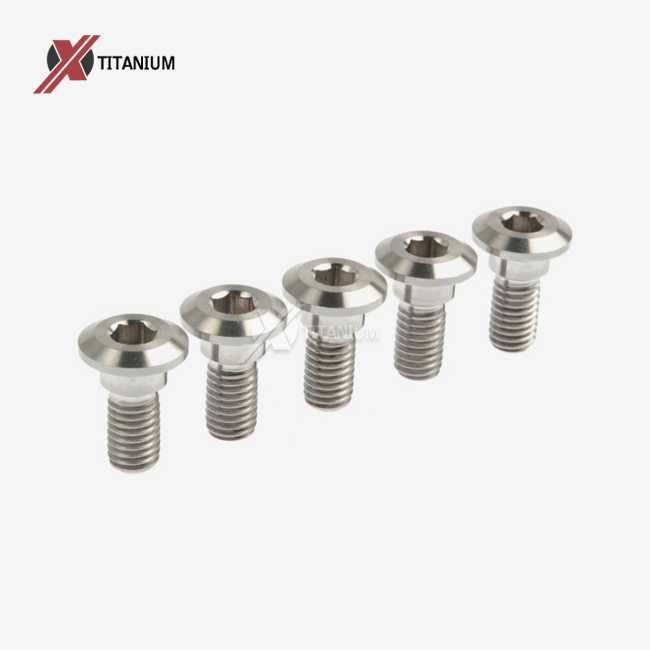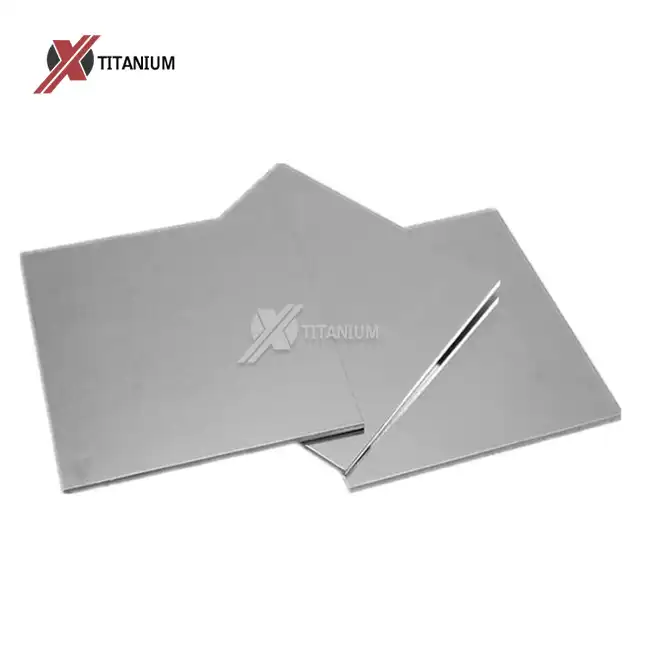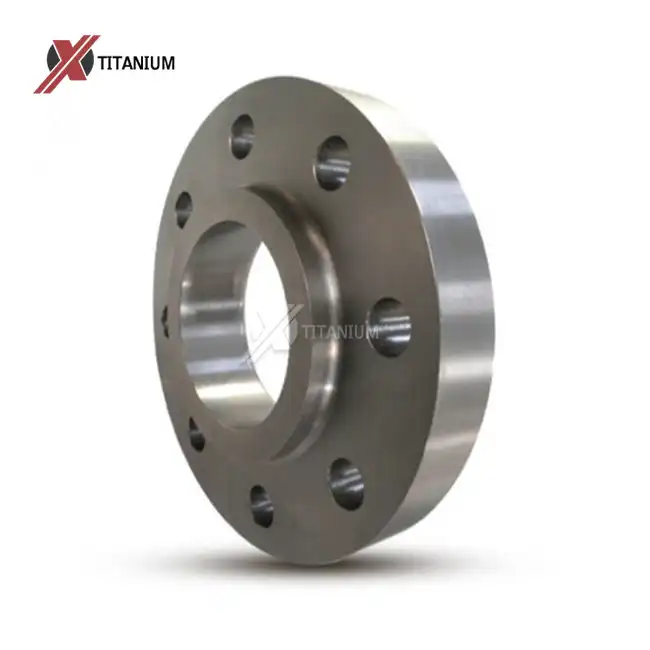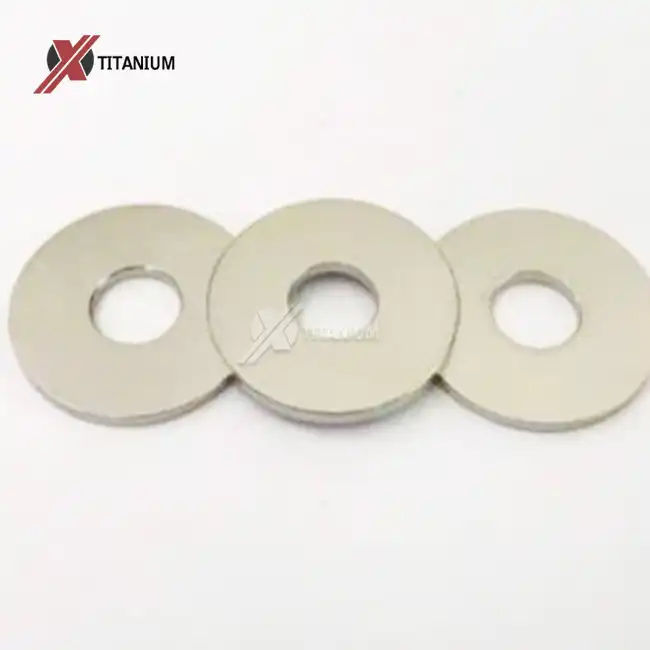The Science Behind Titanium's Superior Properties for Motorcycle Components
Titanium's remarkable properties make it an ideal material for motorcycle components, especially critical fasteners like rotor bolts. The atomic structure of titanium gives it an impressive strength-to-weight ratio, surpassing that of steel while being 45% lighter. This unique characteristic stems from titanium's hexagonal close-packed crystal structure, which provides excellent resistance to deformation under stress.
The alloying process further enhances titanium's properties. For instance, the popular Grade 5 titanium alloy (Ti-6Al-4V) used in motorcycle rotor bolts contains 6% aluminum and 4% vanadium. This composition results in a material with a tensile strength of approximately 900 MPa and a shear strength of 830 MPa, making it robust enough to withstand the intense forces experienced during high-performance riding.
Moreover, titanium naturally forms a stable oxide layer when exposed to oxygen, giving it superior corrosion resistance. This self-healing property ensures that titanium motorcycle rotor bolts maintain their integrity even when subjected to harsh environmental conditions, including exposure to road salt, moisture, and varying temperatures.
Thermal Properties and Their Impact on Performance
The warm properties of titanium too contribute to its performance-enhancing qualities in bike applications. Titanium has a lower warm development coefficient compared to steel, meaning it grows less when warmed. This characteristic is especially useful for rotor jolts, as it makes a difference keep up steady pressure and arrangement indeed beneath the tall temperatures produced amid strongly braking.
Additionally, titanium's lower thermal conductivity helps insulate the rotor bolts from excessive heat transfer. This property can contribute to more stable brake performance over extended periods of high-intensity use, as it helps mitigate heat-induced brake fade.
Performance Advantages of Titanium Motorcycle Rotor Bolts
Upgrading to titanium motorcycle rotor bolts offers several tangible performance benefits that can significantly enhance a rider's experience. The most notable advantage is the reduction in unsprung weight. By replacing standard steel bolts with titanium alternatives, riders can achieve a weight savings of up to 45% per bolt. While this may seem insignificant in isolation, the cumulative effect across all rotor bolts can lead to a noticeable improvement in the bike's dynamics.
Reduced unsprung weight translates to improved suspension responsiveness. The lighter components allow the suspension to react more quickly to road imperfections, resulting in better tire contact with the road surface. This enhanced contact patch improves both traction and handling, particularly during cornering and braking maneuvers.
The superior strength of titanium rotor bolts also contributes to improved performance. Their high tensile and shear strengths ensure that the rotor remains securely fastened to the hub, even under extreme braking forces. This stability is crucial for maintaining consistent brake feel and performance, especially during high-speed riding or track use.
Longevity and Maintenance Benefits
Past quick execution picks up, titanium bike rotor jolts offer long-term preferences in terms of strength and support. The remarkable erosion resistance of titanium implies these jolts are less vulnerable to corruption from introduction to dampness, street salt, and other destructive components. This resistance not as it were expands the life of the jolts but too rearranges support schedules.
Furthermore, titanium's resistance to galling – a form of wear caused by adhesion between sliding surfaces – ensures that the bolts can be removed and reinstalled multiple times without compromising their integrity. This feature is particularly valuable for riders who frequently service their own bikes or participate in racing events where quick rotor changes may be necessary.
Considerations When Upgrading to Titanium Motorcycle Rotor Bolts
Whereas the benefits of titanium cruiser rotor jolts are various, there are a few variables riders ought to consider some time recently making the overhaul. The beginning taken a toll of titanium jolts is regularly higher than that of standard steel options. Be that as it may, this fetched differential ought to be weighed against the execution benefits and long-term solidness focal points.
It's crucial to ensure that the titanium motorcycle rotor bolts are compatible with your specific motorcycle model and rotor design. Some manufacturers may have specific torque requirements or recommend against using aftermarket fasteners. Always consult your motorcycle's service manual or a qualified mechanic before making any modifications.
When installing titanium rotor bolts, it's essential to follow proper torque specifications. Due to titanium's different mechanical properties compared to steel, the torque values may differ from those of the original bolts. Over-tightening can lead to bolt failure, while under-tightening may result in rotor movement and compromised braking performance.
Maintenance and Inspection Protocols
In spite of the fact that titanium rotor jolts require less visit upkeep than their steel partners, customary review remains vital. Occasionally check the jolts for any signs of wear, extricating, or harm. Pay specific consideration to the jolt heads and strings, as these regions are most helpless to stretch.
When servicing titanium rotor bolts, use appropriate tools and lubricants. Some anti-seize compounds may not be compatible with titanium and could potentially cause damage. Opt for titanium-specific lubricants or those recommended by the bolt manufacturer to ensure optimal performance and ease of future removal.
Conclusion
In conclusion, titanium motorcycle rotor bolts offer a compelling upgrade for riders seeking to enhance their bike's performance and durability. By understanding the science behind titanium's properties and carefully considering the implementation factors, riders can make an informed decision about whether this upgrade aligns with their performance goals and riding style. For more information about titanium motorcycle rotor bolts and other high-performance titanium components, please contact us at info@cltifastener.com or djy6580@aliyun.com.




